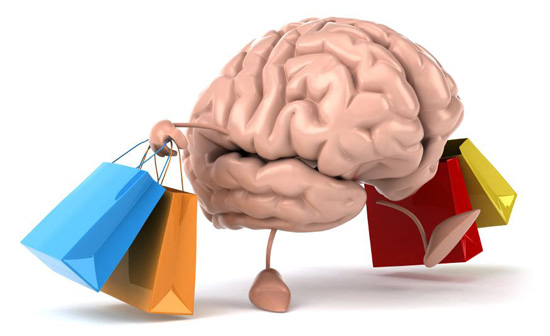Have you heard of the term “Neuromarketing”? It is an evolving field of study that marketers have been applying to optimize their marketing strategies. What’s so great about it, you might want to ask? Not only does it work, but it examines the human mind and the factors that influences purchasing behavior. In short, it is a common ground where both the brain and the marketing strategies meet.
This article from Forbes can tell you more about it.
Studies in Neuromarketing have discovered a structure found in the brain’s Limbic System which is called the Reptilian Brain. For starters, it is named the Reptilian Brain because of its animalistic nature. It is responsible for our basic instincts and our primal responses. In fact, this structure has existed in the brain long before the higher functioning structures have developed.
It’s also important to note that the Reptilian Brain processes our emotions. Just to set a clear definition—emotions are automatic and they do not require logical deductions for processing.
At this point, you might be wondering, “What’s all of this got to do with the Reptilian Brain?” The answer is—EVERYTHING! This guide focuses on explaining the mechanisms of the reptilian brain and how your marketing strategies can appeal to them. Let’s hop right in.
Fear
This may come off as a surprise to some, but highlighting negativity over positivity in your marketing campaigns will tend to yield you better results. For instance, no smoking ad campaigns introduce photos of lung cancer before presenting their cause. Plus, products sell quickly when they are in limited edition (fear of missing out).
The truth is, our brains are wired to avoid stress and fear-inducing situations at all costs. Found in our limbic system is an almond shaped structure called the Amygdala, which is the seat of fear. The Amygdala is responsible for our adaptive instinct called the ‘fight or flight’.
In the context of marketing, your strategy should be in the position of removing inconvenience rather than applying the opposite. You can start by emphasizing your customers’ pain points or letting them realize what they are lacking, then follow it up by pitching your products/services—carefully explaining to them how you can lift off the burden from their shoulders.
Dominance
Newsflash: The Reptilian Brain is described as self-centered. If you want your strategy to work, put yourself in a position of submission to your customers, or make it appear like it is all about them.
This is why personalized services work wonders for your company’s bottom line. As you craft your marketing campaigns in such a way that place customers on the limelight, you are actually increasing their brain activity.
Dennis Carmody and Michael Lewis can attest to this. They have discovered that the brain is aroused whenever a person would hear his/her name. In relation to that, even using the word YOU in your advertisements can be as effective (Read more about this on Shopify’s post.)
Reciprocity
According to Robert Cialdini’s 6 key principles of influence, reciprocity highly motivates purchasing behavior. If you want your audience to do something for you, you have to initiate the first step. As a result to you doing that, they are then bound to reciprocate your goodness.
A good example is how online shops are giving away freebies. Because their web visitors end up using their freebies (and are liking it), they would feel somewhat compelled to return the favor, even if they aren’t consciously thinking about it.
Tip: The technique of giving away freebies will yield better results if you capture your audience’s email address. Having them in your email list will allow you to establish a better relationship with them, which then puts you in a strategic position to pitch your products in the future.
Worship and Submission
After having Tiger Woods endorse their brand, Nike golf balls produced a profit worth 50 million dollars in the year 1996. Similarly, Titan Watches generated over 45 percent worth of additional sales to their bottom line soon after Amir Khan endorsed their product.
I’d bet that this technique isn’t new to you. Companies invest on famous and prominent people to endorse their brands. Have you ever wondered why it works?
Danny Francis and Dr. Rashad Yazdanifard (2013) concluded in their study that this strategy is effective because it influences the followers of a celebrity. The fame of the celebrity serves as the brand’s leverage.
Psychologically speaking, the Social Cognitive Theory claims that people are more inclined to being influenced and persuaded by individuals who are perceived with higher status (famous or rich individuals). Moreover, I mentioned above that the Reptilian Brain preexisted before other structures have formed. In this regard, we are basically wired to pattern the way we act with someone we perceive as ‘higher’ than us—case in point, toddlers validate their actions from authority figures.
So you see, prominent individuals directly impact the way we perceive and identify brands. It is a simple yet subtle and cunning technique.
Pleasure and Sensation
One of the fastest and best possible ways to impress your customers is to target their five senses. Sensory stimuli are rapidly processed in the Hypothalamus than any other stimulus. That means, there is no need for your customers to exert conscious effort.
A study conducted by Shabgou and Daryani (2014) suggested that the five senses account for a total of 21.4% of purchasing behavior: (6.1%-sense of sight, 9.2%-sense of smell, 7.4%-sense of hearing, 11.7%-sense of touch and 14.4%-sense of taste). Hence, integrating sensory cues with your brand could preempt your customers’ decision to purchase from you. To reiterate what I’ve stated above, there is no conscious effort required because this occurs unconsciously.
Some examples include spas and restaurants. Spas deliver a unique and relaxing experience for their customers by setting a sensational environment. There’s a signature aroma, soothing music and comfortable equipment. Restaurants, on the other hand, entice customers by emphasizing photos of their mouthwatering dishes in their menus set up outside the place.
What’s next?
Have you been using Neuromarketing to get better results out of your marketing campaigns? What are the things that you feel made the most impact out of your strategies? And what are the things that caused your marketing efforts to flop? You can share your ideas in the comments section below.



